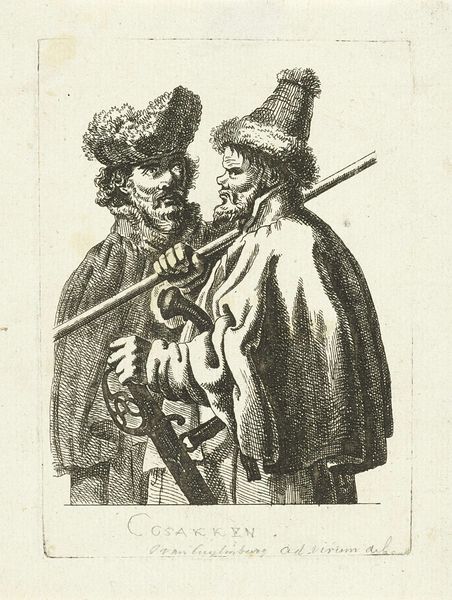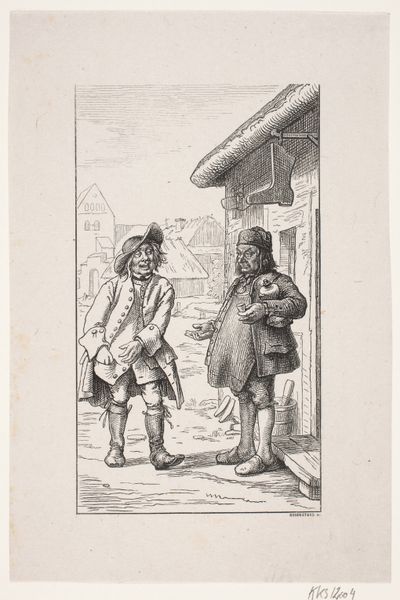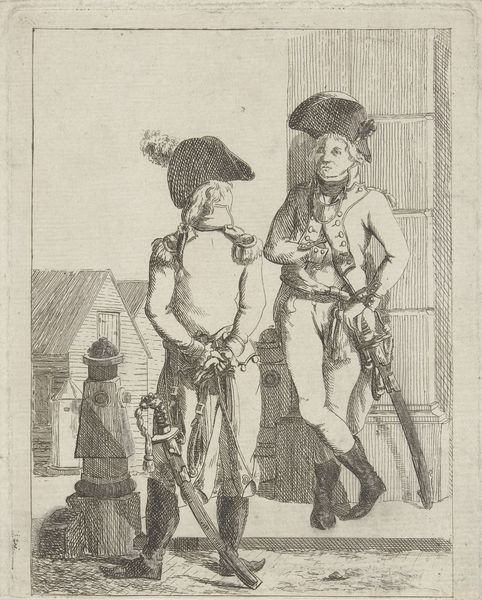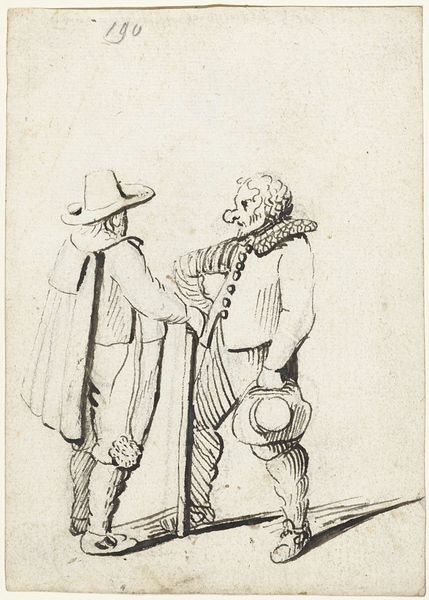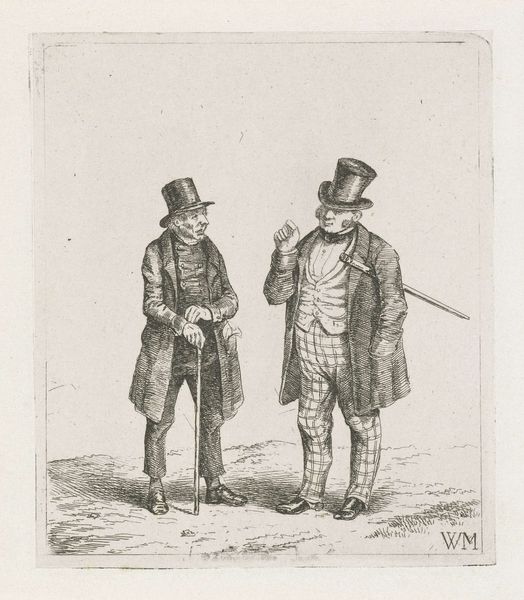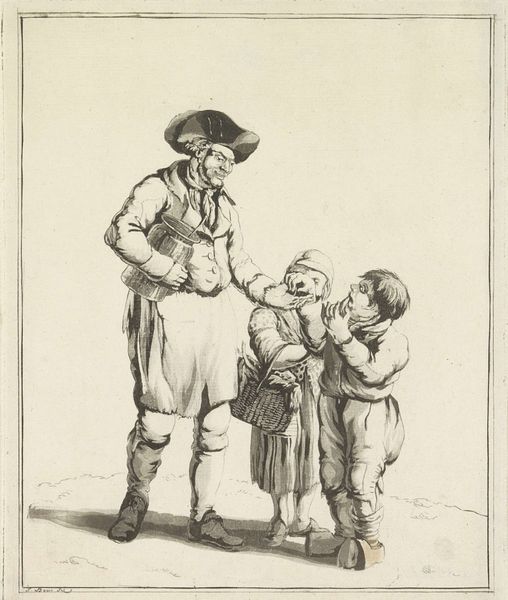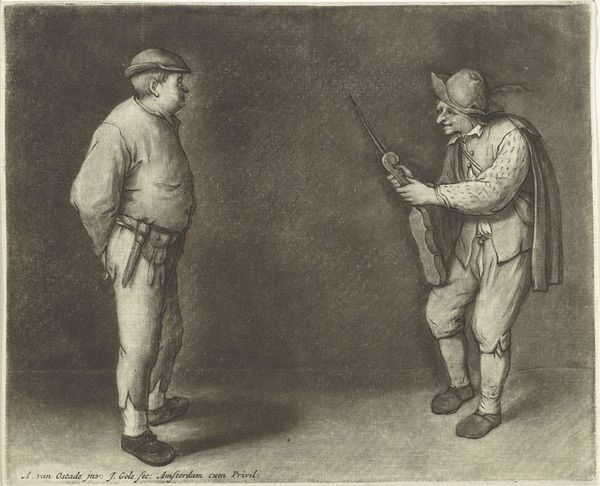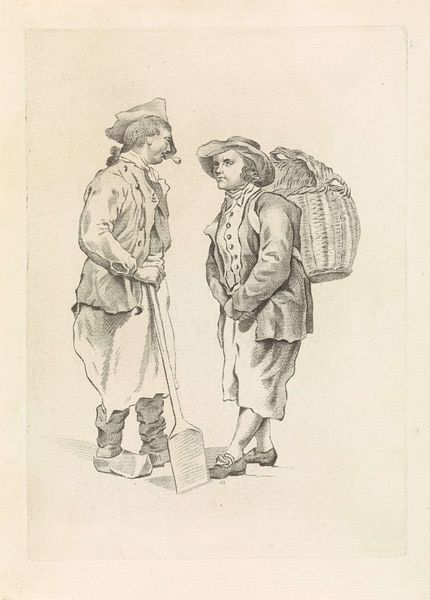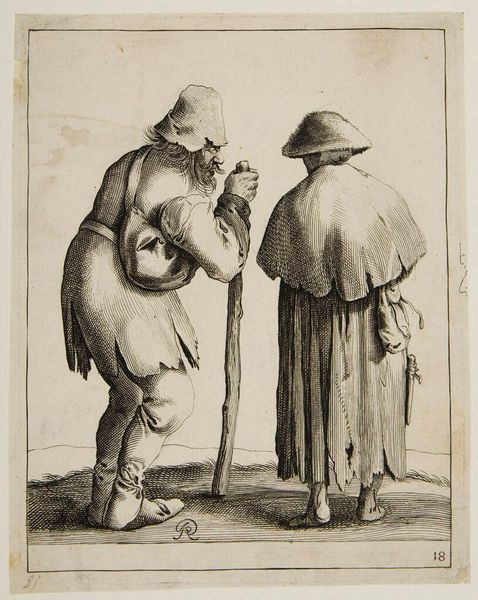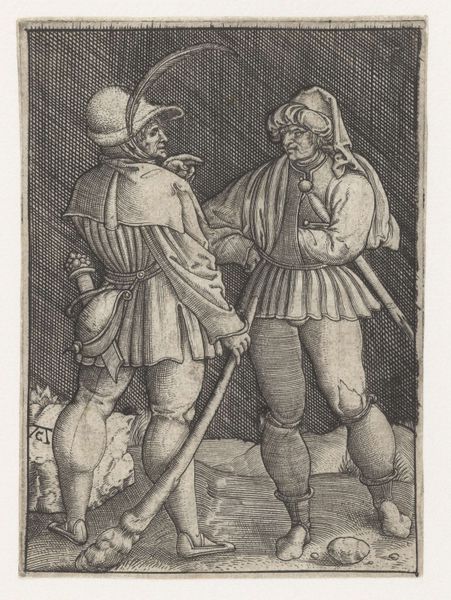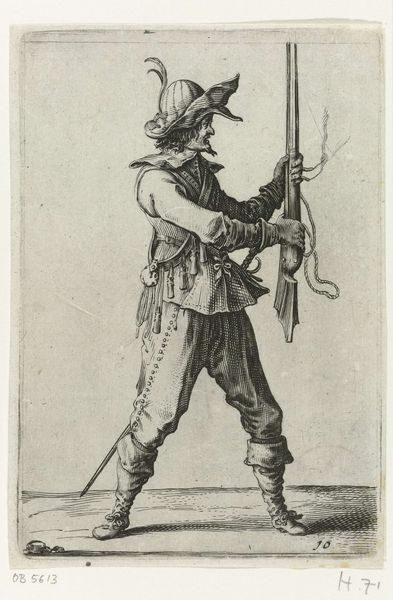
Kapitein Frans Banninck Cocq en luitenant Willem van Ruytenburch 1874
0:00
0:00
edouardtaurel
Rijksmuseum
Dimensions: height 300 mm, width 206 mm
Copyright: Rijks Museum: Open Domain
Curator: Here we have an engraving created by Edouard Taurel in 1874 after Rembrandt’s famed painting, “The Night Watch”, the proper title of which is “Kapitein Frans Banninck Cocq en luitenant Willem van Ruytenburch." Editor: My first impression is one of theatrical formality. The figures, rendered in crisp lines, appear almost like actors poised on a stage, ready to deliver their lines. Curator: Indeed. Taurel's engraving reflects the Dutch Golden Age through a 19th-century lens, embodying both the Baroque dynamism of the original and a later sense of historicism and print culture that thrived in Europe at this time. Engravings such as these offered new audiences a version of classic paintings in reproducible forms, like the illustrated press. Editor: I'm immediately drawn to the sartorial details. The lace collars, the plumed hats, the intricate detailing on their clothing all scream status. Each element seems carefully chosen, deliberately presented to project power and civic authority. Even their facial hair seems carefully calibrated. Curator: You are perceptive. The iconography of dress in the Dutch Golden Age was immensely important. Clothing reflected not only wealth, but also civic identity and social standing, all increasingly critical in a booming trading Republic such as the Netherlands. This engraving makes explicit how artists throughout history have adapted Rembrandt’s innovative civic portrait to a broad public. The print speaks of memory and history as much as of its immediate Dutch present. Editor: Seeing this depiction reminds me of similar images used to legitimize authority or represent a certain idea of idealized citizenship. I think we are attuned to reading portraits and spotting the visual signs of rank, power and aspiration. It's a compelling interplay of visual language, almost like an elaborate code, isn't it? Curator: Precisely! And remember, reproductions like these also were vital in disseminating Rembrandt's style throughout Europe, ensuring that his style and compositional strategies were known and understood broadly across Europe and the Americas. Editor: Reflecting on Taurel's interpretation of Rembrandt, what strikes me most is how images constantly accrue layers of meaning. What appears to be a simple reproduction is, in fact, a vibrant record of evolving visual cultures. Curator: An astute point, demonstrating how deeply images embed within cultural memory, altering and gaining new meaning, century after century.
Comments
No comments
Be the first to comment and join the conversation on the ultimate creative platform.
